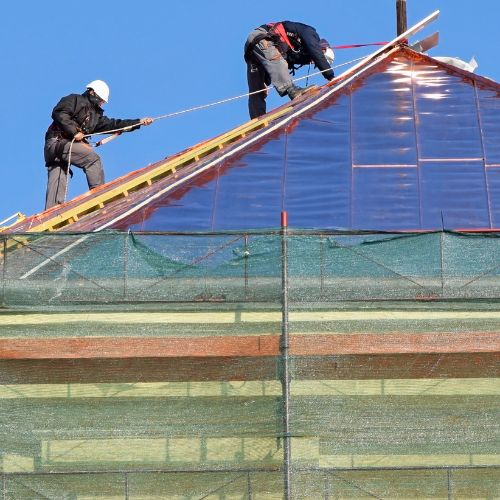How to Install Rolled Roofing
by siteadmin

Roll roofing can be used to quickly and cheaply cover your roof. Roll roofing works well for sheds and gazebos as well as three-season rooms.
Start by measuring the surface to be covered and buying a piece that matches. Next, cut the roofing to size and attach it using nails or staples.
Layout
Rolled roofing is an affordable alternative to traditional tiles. It is light weight and easy to maintain make it a popular choice with homeowners.
It's also an excellent option for homeowners who want to cut down on costs and still keep their home green. It is not as long-lasting as shingles so should not be used for low-slope roofs.
Installing rolled roofing requires that you first lay down a starter roofing material. High nails are used to nail the starter course's upper edge in place. They should not exceed one inch.
After you have completed the first course it is time for roofing cement to be applied. This will protect the surface from water leakage and ensure it is completely covered.
After cement has been applied you can cut the rolled roofing to fit each part of your roof. To ensure that you have a flat surface, this should be done on a chalk line.
Nails
Rolling roofing can be installed with a variety different types of nails. You can choose from smooth shank nails or square cap nails.
Roll roofing is commonly used for sheds. This roof is the most economical, but it should be done correctly in order to last for many years.
Begin by measuring the lengths of any valleys in your roof. Place a piece of rolled roofing 18 inches wide in the middle of the valley.
Each course of rolled roofing should be applied the same as the previous. You will use short nails 6 inches apart that are placed 1 inch beyond the outer edge.
Cover the roof with roofing cement once it is fully covered. Spread it on the first layer of roofing cement and cover it with a second sheet rolled roofing.
Hammer it down into the individual layers. You can do this in intervals of 10 inches across the roof. Do not lift your feet while nailing. Instead, put them on the roll roofing and hammer. This will stretch the material, making it easier to nail.
Overlapping
Roll roofing can be used to cover sheds, garages or gazebos. It is not recommended for residential use.
To install rolled roofing, you must first gather all the tools and materials. Clean the roof well and remove any debris.
Measure the roof to determine the position of the first layer. Draw a line of chalk on the roof to mark the lower edge for the second layer. It should overlap the first layer at least 3 inches.
Once you have drawn a chalk line on your roof, place the first layer of rolled roofing with galvanized roofing nails. You should space your nails between 6-10 inches and one inch from the edges.
Roll out the next section of rolled roofing, and then overlap it by at most 4 inches. Cover the first layer of roofing cement with the second layer.
Cement
Cement is an adhesive substance that makes other materials stick together. It is used most often in roll roofing to bond to the surface and make it more secure.
The extraction of limestone and clay is the first step to making cement. These raw materials can then be processed in a furnace to create fine cement.
The clinker is mixed with water and aggregates once it's dried to create concrete. The final product's strength will depend on the ratio of cement to water.
Hydraulic cement, which hardens and sets in water, is the most commonly used type of cement. However, it's usually lime-based. There are other types of cement.
1714 Gilbertsville Rd, Pottstown, PA 19464
Roll roofing can be used to quickly and cheaply cover your roof. Roll roofing works well for sheds and gazebos as well as three-season rooms. Start by measuring the surface to be covered and buying a piece that matches. Next, cut the roofing to size and attach it using nails or staples. Layout Rolled roofing…
